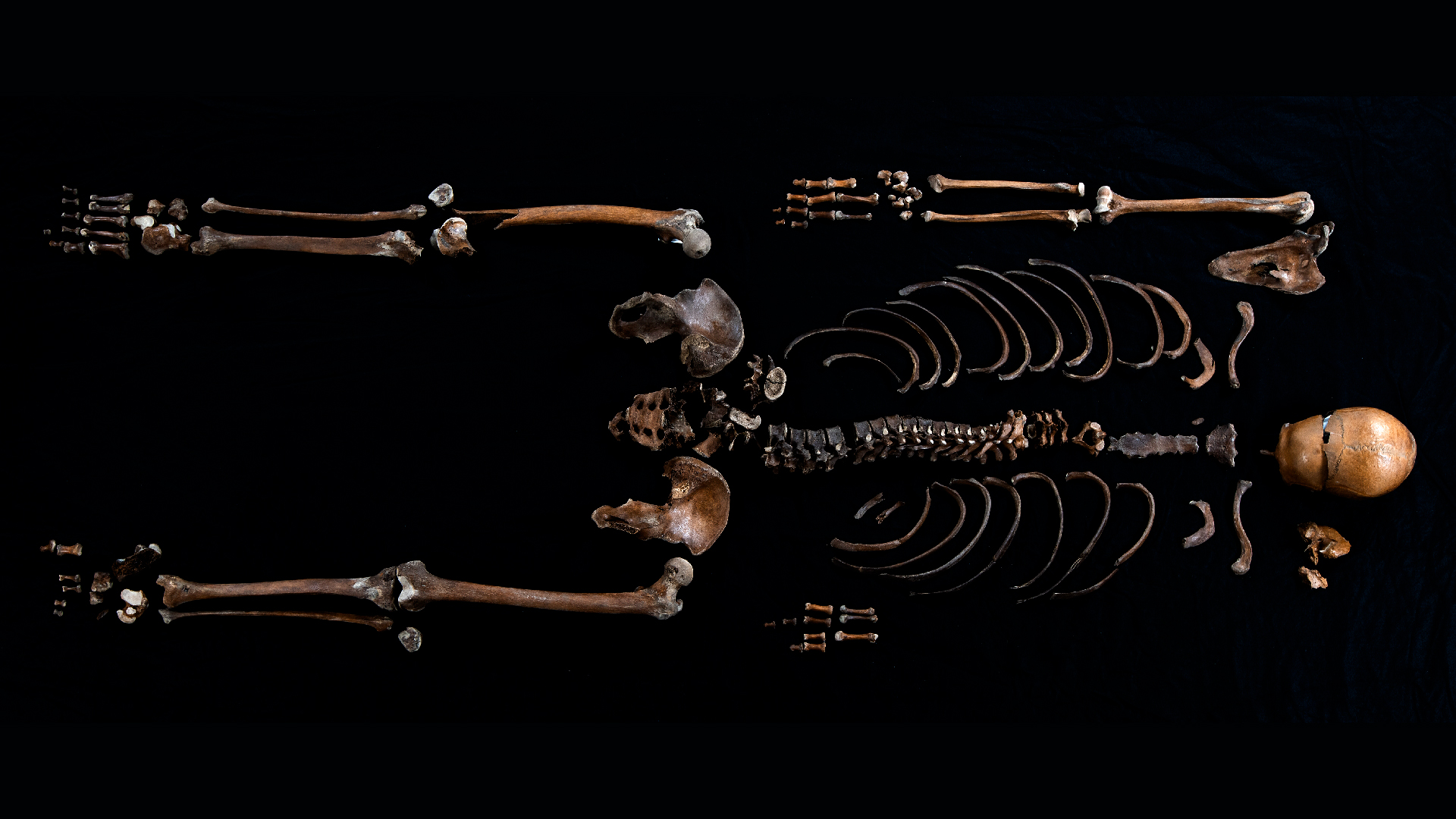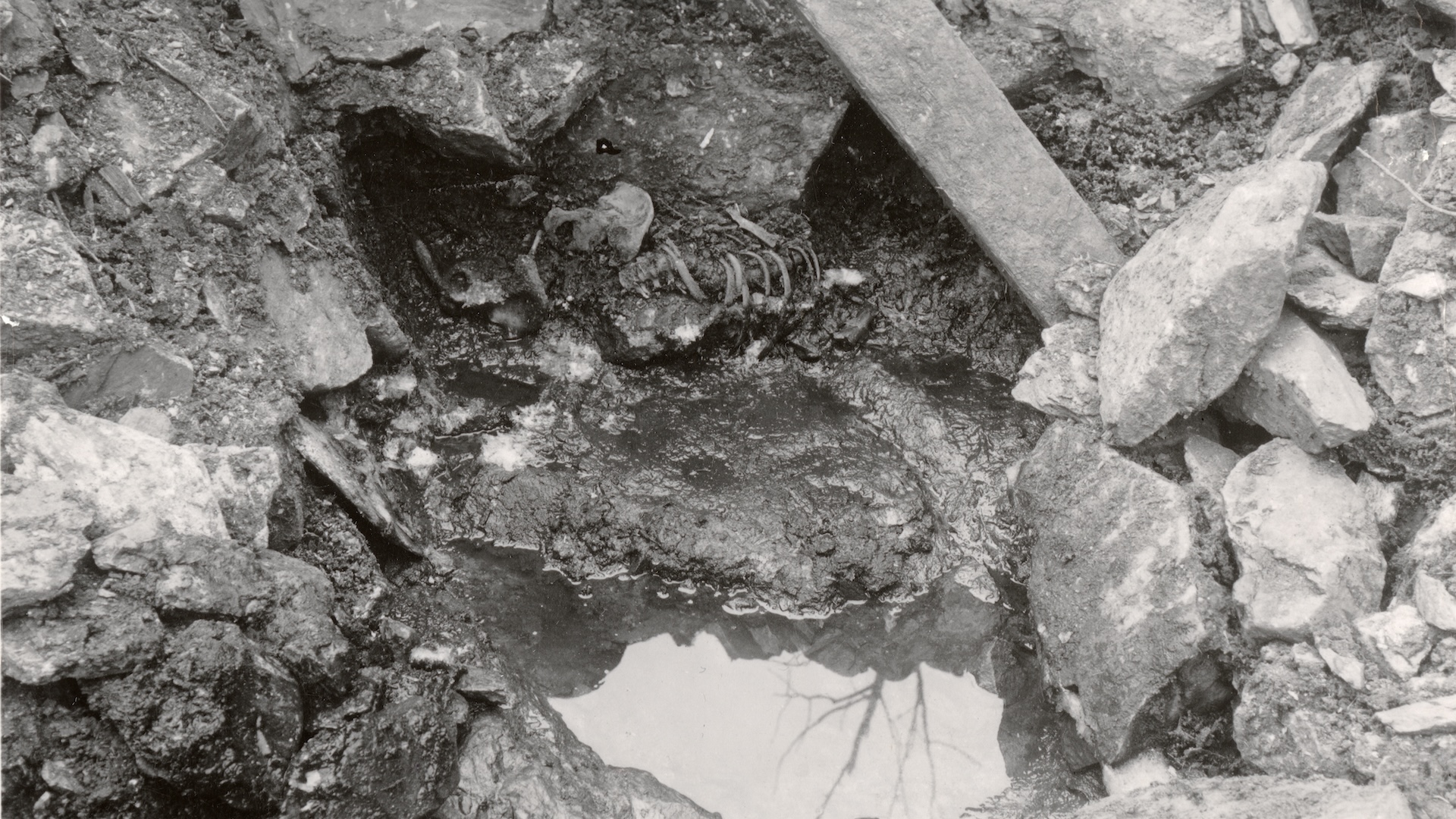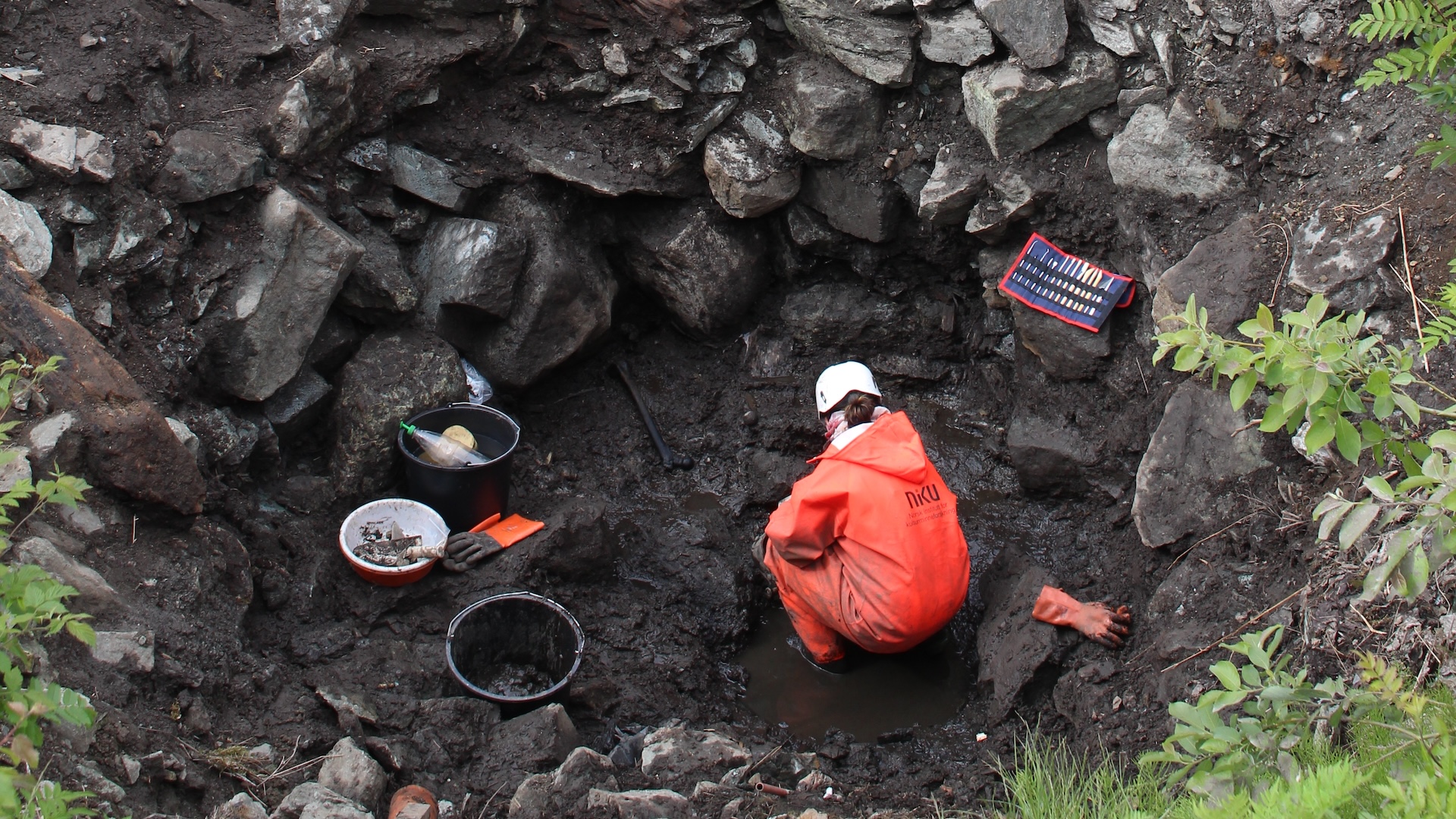
A new scientific examination of 800-year-old human remains in Norway corroborates a royal history claiming that a dead body was thrown there to poison its water.
The skeletal remains of the man were found in a well in a Norwegian castle in 1938. Now, a new study, published Friday (Oct. 24) in the journal iScience, combines radiocarbon dating and DNA analysis to determine that he probably died in 1197 during a raid on the castle of the Norwegian king Sverre Sigurdsson near Trondheim, in central Norway. The events are recorded in "Sverris Saga," one of the "King's Sagas," or prose poems, written in Norway and Iceland between the 12th and 14th centuries to glorify Norse kings.
Study co-author Michael Martin, an evolutionary geneticist at the Norwegian University of Science and Technology, told Live Science this may be the first time a person in the Norse sagas had been found.
He noted genetic analysis was used to identify the remains of England's king Richard III, but they were from 1485. The body in the well, however, dates from centuries before, in 1197: "This is the earliest time that genomic approaches have been applied," Martin said.
New ancient DNA analysis also suggested that the dead man's ancestors came from southern Norway, which challenges the assumption by some researchers that he was one of the castle defenders from central Norway. Instead, either this defender had origins in the south, or the attackers had thrown one of their own dead into the well, the authors wrote.
Poisoning the well
Archaeologists think "Sverris Saga" was written around the time of the events it describes, and perhaps under the supervision of Sverre himself, who ruled from about 1177 until his death in 1202.
According to the study, the 182-verse prose poem relates Sverre's rise to royal power in Norway in the second half of the 12th century. It details many of the battles fought by his soldiers, called "Birkebeiner" or "birch legs" after the birch-bark wrappings they wore to protect their lower legs; while Sverre's main enemies were a rival faction called the "Baglers," the study authors wrote. It was during a Bagler attack in 1197 that the dead man was reportedly thrown into the well outside the castle near Trondheim to poison its water for Sverre and his Birkebeiner defenders.

"They took a dead man and cast him into the well, and then filled it up with stones," the translated saga reads.
It's possible that the bones in the well were not those of the dead man from the saga, but radiocarbon dating shows that he died at the same time, the study authors wrote.
"While we cannot prove that the remains recovered from the well inside the ruins of Sverresborg castle are those of the individual mentioned in Sverris Saga, the circumstantial evidence is consistent with this conclusion," they wrote.

Southern man
The genetic analysis suggests the man from the well probably had blue eyes and blond or light-brown hair and that he had the typical ancestry of people who grew up in the southern Agder region.
However, the Agder region seems to have been a stronghold of the Baglers, so it's now unknown if the dead man was from the Birkebeiner or Bagler army, the study authors wrote.
University of Stavanger archaeologist and historian Roderick Dale, a specialist in Old Norse literature who wasn't involved in the new study, agreed that the analysis seemed to corroborate the events described in the saga. But he noted that "Sverris Saga," like many of the King's Sagas, was "more propaganda than history."
"As such we might consider it in the same way we might approach a modern politician's autobiography," Dale told Live Science in an email. "It is not a history per se, although it deals with historical events that happened in the lifetime of the author."







